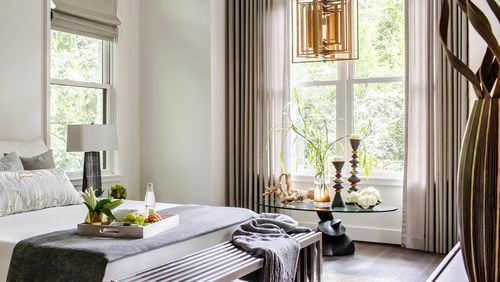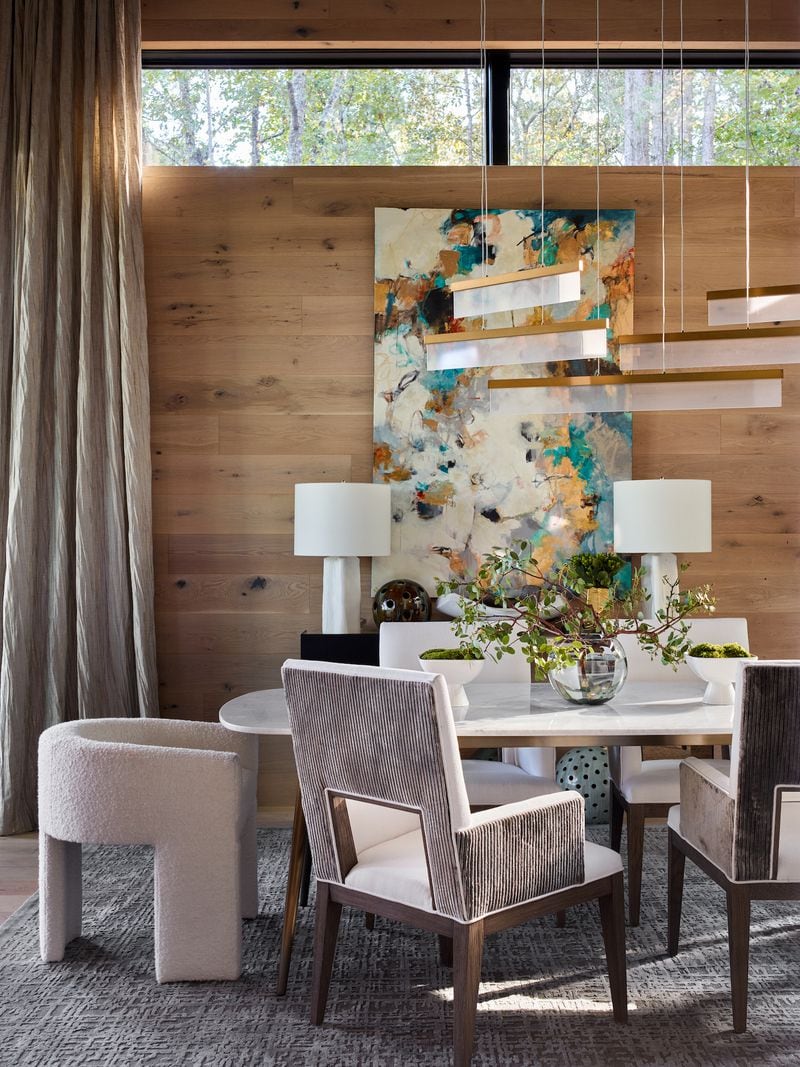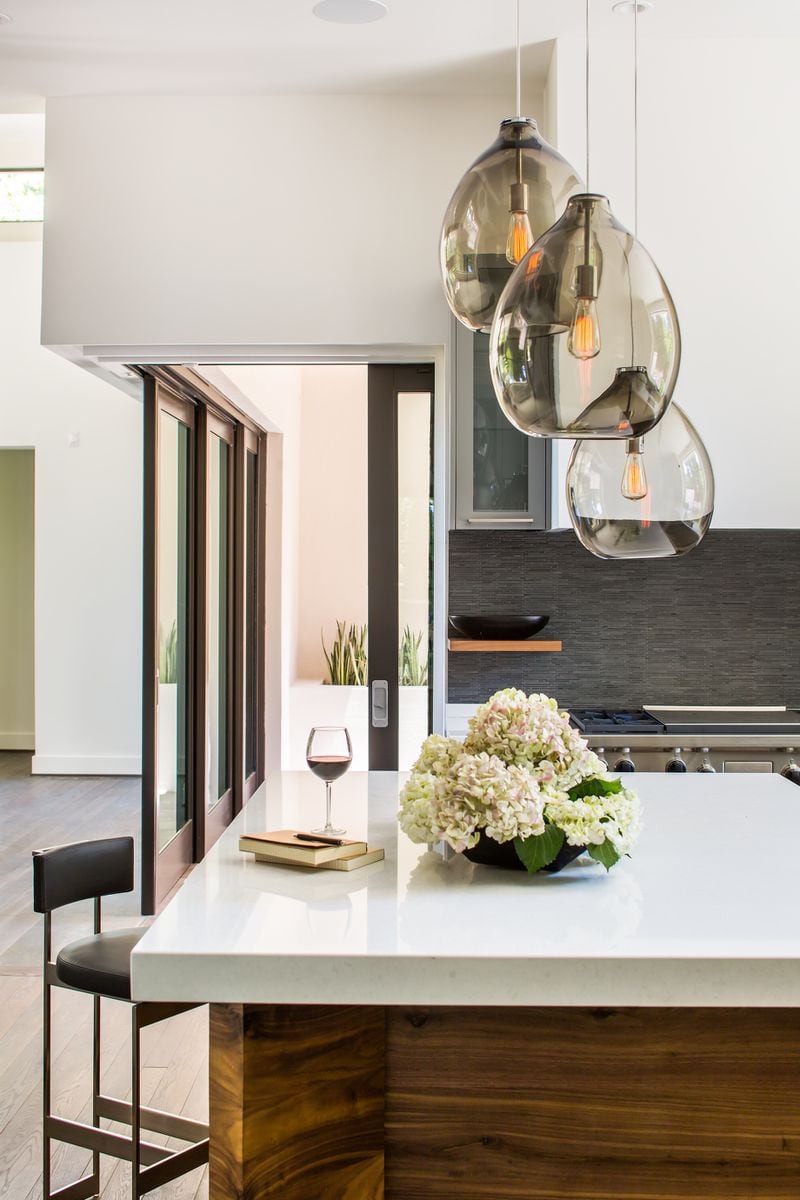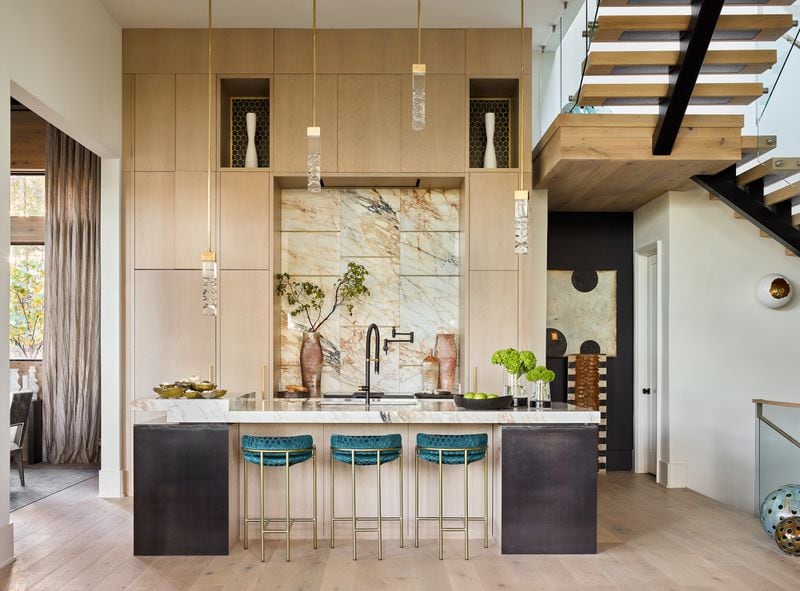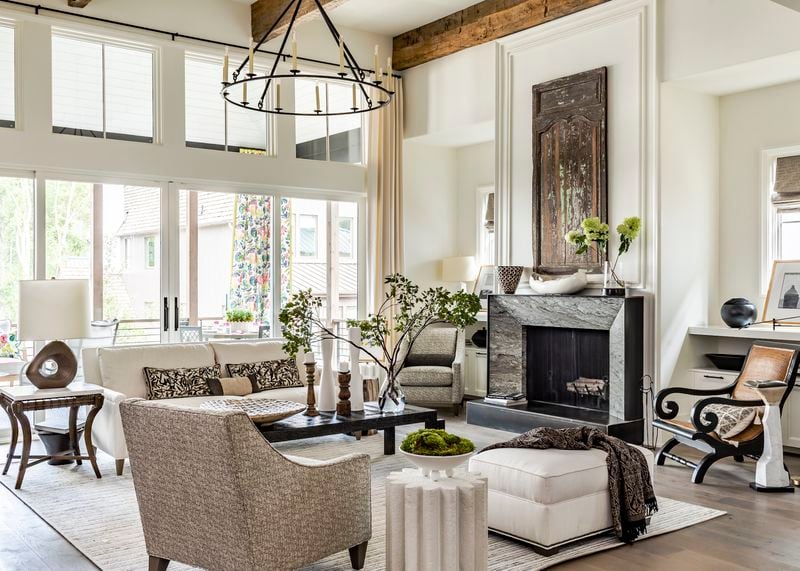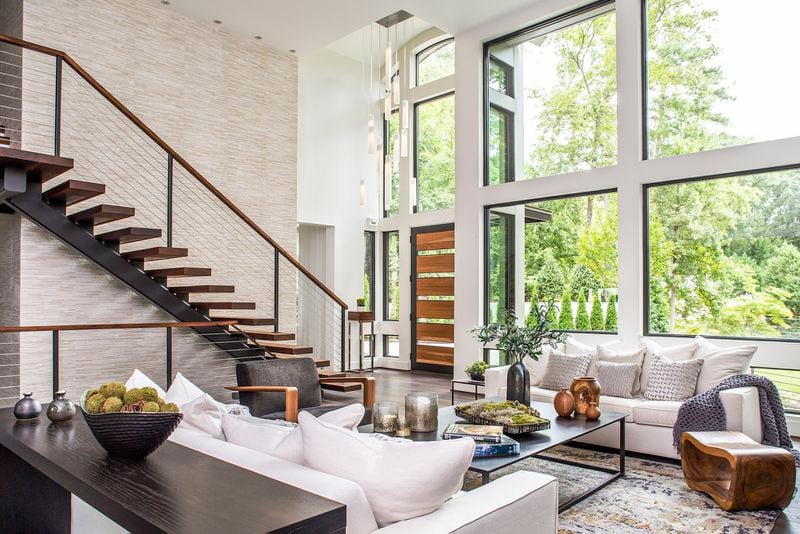Considering how much time we spend at home, making sure it looks and feels good is important.
But equally critical, experts say, is ensuring your home is contributing to your overall health.
Home health means materials such as furniture, flooring, countertops and mattresses are free of toxic chemicals, that water is devoid of impurities and that the place we spend 65 percent of our time, according to the Harvard T.H. Chan School of Public Health, contributes to rather than negatively impacts our health.
Credit: Emily J Followill
Credit: Emily J Followill
Atlanta interior designer Lorraine Enwright of Intuitive Dwellings by Enwright Design Inc. takes “mind, body and spirit” into account when designing homes that are not just physically healthy but also support mental health.
Though Enwright notes that ensuring your home is beneficial to your health can cost more, building or remodeling a home can offer an opportunity to install healthy features such as air and water filtration and whole house mechanical ventilation systems that bring fresh air inside (though air filters must be regularly changed to keep them working effectively). But new construction also creates a greater need to ensure your air is healthy since newer homes can pose a greater health risk because they tend to be better sealed, thus trapping indoor air pollution inside.
Credit: Jeff Herr
Credit: Jeff Herr
Harvard University’s Healthy Buildings program offers advice to homeowners on how to make their homes healthier whether that means cooking with the exhaust hood on to draw out air pollution or vacuuming regularly with a HEPA (high-efficiency particulate air) filter. Because a vacuum cleaner without one is just breaking up and recirculating particles in your home.
Companies are becoming savvy about how to make good health a part of the design process. Range hood design has become an essential part of kitchen design. In addition, companies including Sertodo’s Copper Water Filter System, West Elm (with its high design humidifiers) or Rabbit Air (with its air purifiers featuring artwork on their device front panels) have made the prospect of creating a healthy home more aesthetically enticing.
More ways to keep your home healthy:
Take off your shoes. Harvard home health experts say that one of the healthiest (and least expensive) things homeowners can do to keep pollutants out of their homes is to remove their shoes when they get home. Enwright has seen people removing their shoes “becoming kind of a norm.” Of most concern to her are not the germs tracked inside but “the lawn chemicals. We’ve stopped using lawn chemicals personally but lots of people still use those,” Enwright noted. “You just want to protect yourself and your family from as much as you can.”
Use glass containers. Enwright prefers to remove fruits and vegetables from their plastic packaging (studies have found microplastics and BPAs — Bisphenol A — leaching from containers into our bodies) and put them into more aesthetic, healthier glass ones.
Reevaluate your use of candles, incense and air fresheners. Many of those products contain VOCs (volaca organic compounds) and soot that pollute the air according to a 2023 National Geographic article. If you want to bring scent into your home, some recommend diffusers as a better choice.
Choose sustainable cleaning products. Diptyque, L’Avant Collective, Safely, Grove Collaborative, Homecourt and Cleancult are some of the companies that have created eco-friendly, plant-based or non-toxic products with attractive packaging for customers looking for healthier home-cleaning products.
Use an air purifier. If installing an in-house filtration system is not possible, portable air purifiers that can be moved from room to room are a good option to remove indoor pollution, Enwright said.
Credit: Emily J Followill
Credit: Emily J Followill
Choose stone or wood flooring over carpeting. Carpeting is harder to clean and can harbor germs and chemicals. In addition, many carpets off-gas (the release of harmful chemicals from new products).
Use no or low-VOC products. Volatile organic products can exist in paint, MDF (medium-density fiberboard), kitchen cabinets, countertops, mattresses and many other materials you bring into your home.
Choose vintage and higher-end products made from hardwoods. A bargain can sometimes come at a health cost. Cheaper furniture sourced overseas is often made from inferior materials not subject to the same regulations required in U.S. manufacturing. “We have no idea how that is made or what’s in that finish,” Enwright said. In addition, products produced overseas are often treated with pesticides and insecticides to prevent infestation on their journey to our country.
Turn on your exhaust range hood. Make sure to turn on your exhaust hood when you cook and that it is vented outside of the home to prevent pollutants from recirculating in your home. If you cook with gas, “the induction process is definitely a nice way to go if you want to just really maximize your air quality,” Enwright said. More consumers worried about their indoor air quality are moving away from gas appliances entirely.
Credit: Jeff Herr
Credit: Jeff Herr
Be cautious with reclaimed materials. Enwright advises making sure you test any lumber you are incorporating as beams, flooring or fireplace mantels in your home. “You do have to be very careful about how you source them,” Enwright cautioned, because items sourced from tanneries or factories that used chemicals can be dangerous to bring into your home.
Bring biophilic features into your home. There are mental health benefits in nature, design and health experts say, and also in home interiors that bring nature inside. Using hardwoods, houseplants, natural patterns and colors that remind us of the outdoors have been shown to reduce stress and increase creativity and productivity.
Credit: Jeff Herr
Credit: Jeff Herr
Pay attention to natural light. Natural light in the morning works in tandem with your natural circadian rhythm “to set your whole clock for that day” Enwright said, “so it has a huge impact on your health.” Enwright likes to bring in reflective surfaces to bounce light around in bright, light-filled kitchens. Moodier, darker studies, dens, family rooms and living rooms by turn, help cue the body that it is time to wind down and prepare for sleep.
Incorporate houseplants. Some design elements offer both physical and psychological benefits, such as houseplants that, according to Piedmont Healthcare, improve air quality, reduce stress and have been shown to contribute to a sense of well-being.
Felicia Feaster is a longtime lifestyle and design editor who spent 11 years covering gardening, interior design, trends and wellness for HGTV.com. Felicia is a contributor to MarthaStewart.com and has been interviewed as a design expert by The New York Times, Forbes and the Associated Press.
